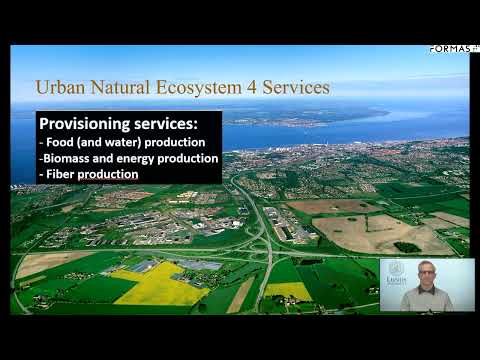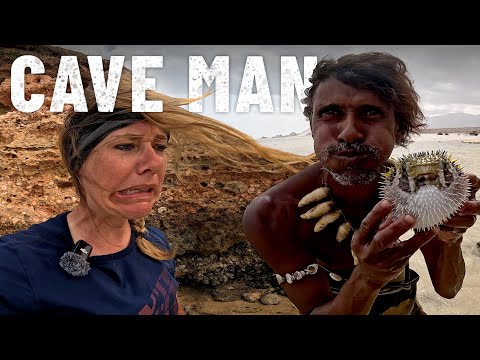Urban natural ecosystem services for sustainable tourism and destination development

Hi everyone and thank you so much for the opportunity to be a part of the educational platform about sustainable tourism in this important region. We all know that sustainable tourism is an important way to promote local growth and social well-being, while also giving a chance of protecting and developing important urban natural values, such as for example ecosystem services. This is important to remember that the part of this region has a wide range of both natural and cultural attractions, making this part of Europe an attractive destination region, especially for creating sustainable tourism. But to ensure that the region's tourism sector remains sustainable, it is important to promote responsible and environmentally conscious practices and cooperations, especially in and between local municipalities. I hope of course that this presentation could be of interest for the subject and aim of the challenge, and this presentation can also be seen as a way to share and spread knowledge, especially knowledge about one of our research projects at Lund University, called Rethinking Urban Tourism Development, Dealing with Sustainability in the Age of Overtourism, which I will come back to in a little while. But first, my name is Michael Johansson, and I am a researcher at Lund University's campus, situated in Helsingborg in Sweden, at the Department of Service Studies.
The Department of Service Studies offers management education with competence in retail, health, logistics, supply chain management, sustainability, culture and creativity, and tourism. The research behind this presentation is supported by FORMAS, Swedish Research Council for Sustainable Development. Well, it is a fact that tourism is one of the world's fastest-growing industries and a major source of income for many countries.
Urban tourism stands out from other types of tourism in that perspective that people travel to places with an already high population density and that they spend less time there than on any other destinations. So, in this presentation, I will talk about the importance of how urban natural ecosystems can provide a range of services that can be used to support sustainable tourism and destination development. These services include, for example, climate regulation, water and air filtration, habitat for wildlife, and recreational opportunities. By protecting and managing these kinds of ecosystems, cities can create attractive tourist destinations that are both ecologically and economically sustainable. For example, green spaces such as parks, gardens, and urban forests can provide an oasis of nature in an otherwise built-up urban environment, providing recreational opportunities and enhancing aesthetic appeal. Protecting and managing these green spaces can also help to regulate the local climate to reduce air pollution, reduce the impacts of flooding, and provide habitat for urban wildlife.
By protecting and restoring these natural ecosystems, cities can create attractive tourist destinations. This FORMAS project addresses the challenges caused by over-tourism and its effects on sustainability in urban destinations. Studies of urban tourism are generally underdeveloped and have not been considered environmentally sustainable enough. This project embraces social, cultural, economic, and environmental sustainability of a destination. The project also rethinks the role of tourism in cities by the involvement of stakeholders within and beyond the tourism industry from a multidisciplinary perspective.
Four research questions are answered. How can urban development organizations develop sustainable strategies which focuses on how can services, innovations, and capacity building be considered in development solutions for destinations? The second one is about how can mediatization of urban destinations be used to manage over-tourism which focuses on what communication strategies can be used to counteract the over-usage of destinations. The third one is about how can anti-tourist sentiment by residents be counteracted which focuses on inclusive place-brand communication and what development strategies can in that case be used.
And finally, the fourth one, my responsibility within this project, how ecosystem services can be used to improve tourism in cities. How ecosystem services can be used to improve tourism in urban destinations and which impacts on ecosystem services should be considered in developing strategies. We can see that tourism can no longer be seen as a trivial or exceptional activity. Instead, tourism has become fundamentally important for many societies, especially for local employment, economy, and also for culture. Tourism as a whole has grown rapidly in the last decades.
Tourism has become a global phenomenon where large parts of the world have become both generating regions and destinations. And as a consequence of the increased consumption of travel, tourism is estimated to account for between 5 and 8% of global greenhouse gas emissions. Transport, mainly aviation and car traffic, causes 75% of tourism-generated greenhouse gas emissions, accommodation 20% and activities the remaining 5%. Climate change is global while the effects of climate change are regional and very diverse. Urban areas are particularly vulnerable to the effects of climate change through heat waves and excessive precipitation.
And despite significant research of the relationship between tourism and climate change, we still know little about the relationship between climate change, ecosystem services and urban tourism. Ecosystem services are a socio-ecological concept and the concepts are defined as the benefits that humans directly or indirectly receive from nature's ecosystems. The fact that human beings depend on the structures, processes and functions of ecosystems for survival and well-being is one of the fundamental importance.
So, the theoretical framework and the concept behind natural ecosystem services emphasize the importance of maintaining healthy ecosystems in order to provide essential services that benefit humankind. It focuses on the provision of goods and services such as for example clean air, water, food and timber that are provided by nature and are essential for human well-being. It is proposed that preserving these services is essential to maintaining the health of the planet and its inhabitants no matter if you are a resident in a city or a visitor or even for that matter a tourist. The framework further suggests that the value of natural ecosystems should be recognized and that the conservation and restoration should be prioritized in order to ensure the long-term sustainability of these services. This theoretical framework also suggests that the economic, social and environmental values of ecosystem services should be integrated into decision-making processes. There are four different types of ecosystem services that have been identified by science.
The first one is provisioning services. These kind of services involve the production of materials and resources such as for example food, fuel, fiber and genetic resources. The second one is regulating services.
These services involve the regulation of ecosystem processes such as for example climate, water and nutrient cycles. The third one is cultural services. These kind of services involve the non-material benefits people obtain from nature which is what we actually see in our surroundings such as for example recreation, spiritual enrichment and aesthetic experiences. And the fourth one is supporting services. These services involve the natural processes that actually allow ecosystems to function such as biodiversity, nutrient cycling, primary production and soil formation. Three quarters of the Earth's natural resources are consumed in urban areas.
And as urbanization continues to rapidly increase around the world the role of cities in the massive erosion of biodiversity cannot be denied. Urban expansion has led to soil eruption and destruction of habitats and the consumption patterns of urban visitors have caused pollution and environmental degradation and in short cities are the key to resolving the biodiversity crisis. There are three key areas to tackle. The first one, local governments must bring new narratives about biodiversity to city developers inviting them to reconnect with nature and reflect on the impacts of their lifestyle. The second one, biodiversity should not be seen only through the view of conservation. Instead, the values of urban ecosystem services need to be better recognized and taken into consideration by planners and decision makers.
And finally, leaders across sectors must work towards a more holistic governance of urban biodiversity with coordinated efforts and political commitments from all levels of government with decision-making processes based on scientific evidence. And here come some quick facts about the actual value of urban green environment. It increases real estate values. Municipalities most often see a rise in house prices when these are surrounded by greenery and vegetation. Improving health. Society profits from a green environment.
Green and blue urban structures provide a healthy environment and it leads to healthier inhabitants. It captures CO2 emissions. Green urban infrastructure is a crucial link for every climate adaption strategy.
Trees, for example, capture CO2 from the air, preventing global warming and help the local environment to cool by mitigating the heat island effect. It purifies air pollution. Greening cities is one of the best solutions for purifying our polluted air. In, for example, several Dutch cities, air pollution is so critical that it has become the third cause of deaths in the Netherlands. Implementing green spaces can therefore save human lives.
And it provides urban cooling. And it regulates water and preventing flooding. A green environment helps to regulate water and enlarges the storage capacity of water and therefore for preventing flooding. On top of that, it provides a great stimulus for the plants and animals that actually live in the city. Improves biodiversity. Cities are promising biodiversity hotspots.
Implementing more greenery invites animals to settle here. There are also numerous examples where nature contributes to soil remediation. And finally, it stimulates social cohesion and cooperation between residents and visitors. We also know that the COVID-19 pandemic has introduced many challenges into the daily lives of individuals, municipalities and businesses. The pandemic has resulted in drastic changes in international travel flows and local destination behaviours.
The perhaps most controversial question today is not whether we can address the COVID-19 social resilience crisis, the climate change and ecological resilience at the same time, but rather whether we can afford not to do so. Nevertheless, urban tourism contributes to important local economic growth, it creates local jobs and, of course, employment. It promotes local urban destination development and it also finances new infrastructures. However, urban tourism also consumes urban spatial land, both local, natural and cultural, in many cases already limited resources. Urban tourism, if not managed well, therefore produces and generates waste, requires facilities, produces local air and water pollution and also alters the everyday life of the residents in a city due to overconsumption of limited urban space.
No one knows exactly how urban tourism post-COVID-19 will really be addressed, but even leaving aside the impact of the pandemic, there is an important issue of urgent need for making urban tourism as sustainable and resilient as possible, both for future residents and also for future visitors. Now, I will try to, in short, summarize this briefly by saying that we see that we need to redefine sustainable urban tourism, to put a focus from a customer perspective to a more citizen perspective. Today, we can see that integration of knowledge is being discouraged of the fact that destination companies are working separate from urban planning and development, despite the fact that tourism has such a big impact on the city's overall local environment.
Sustainable tourism development should therefore be more incorporated into urban planning to a greater extent than it is today. We need to establish a relationship between the visitors and those who live and work in the city. And here we can see a couple of local examples of natural-based solutions for resilient destination development. And finally, to conclude, we have seen dramatic effects of climate change in recent summers.
In 2021, cities in Belgium and Germany were seriously damaged by flooding. In 2022, London experienced the highest temperature even recorded, with over 40 degrees. While in Delhi, in India, temperatures reached 49 degrees. We saw in France and the US wildfires destroyed forests and threatened urban areas.
Climate risks are particularly high in urban areas, due to their density of buildings and infrastructure, causing heat island effects due to urban surfaces, higher capability to absorb and retain heat relative to rural surroundings. Heating effects differ geographically within urban areas. Districts with a high percentage of buildings and hard surfaces are particularly vulnerable. Districts with a higher degree of tree coverage and vegetation are less affected.
Central districts where the main tourist attractions are located tend to have a dense building structure and are therefore relatively more affected than surrounding areas. In global change policy, mitigation is the obvious focus in finding solutions to prevent the world temperature from increasing beyond tolerable levels. So, finally, based on what we have learned through our project, we can say that green infrastructure that is already in place needs to be carefully conserved and managed.
Further developments could preferably be linked with other sites of natural or cultural interest. It is important to include ecosystem services in urban planning processes to safeguard environmental sustainability. Take advantage of possibilities to develop means of adaptation in ecosystem services, thereby traditional physical infrastructure can be supplemented. And use ecosystem services strategically to increase experience values and urban attraction for locals and visitors. And with that said, I thank you so much for this opportunity talking about my research on sustainable tourism. And once again, I would just mention that the research is supported by FORMAS, the Swedish Research Council for Sustainable Development.
Thank you so much.
2024-02-25 00:22


